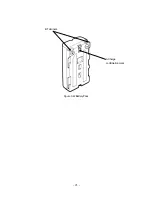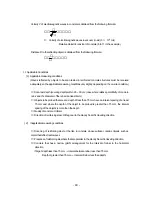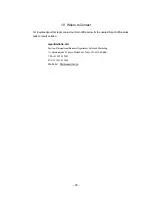
5
Theory
5.1
Principle of Operation
The principle of this radar is basically the same as for general radars widely used at present.
Electromagnetic waves are transmitted from the antenna toward the concrete as shown in Figure
5-1. The electromagnetic waves are reflected by an interface with the reflecting objects (e.g.,
reinforcing steel bars or cavities) whose electrical property is different from that of concrete. The waves
are reflected back onto the surface of concrete and received by the receiving antenna placed near the
concrete surface. The distance to the reflecting objects can be calculated from the time the reflected
waves need to reach the receiving antenna. The horizontal locations of the objects can be detected by
moving the main unit on the surface of concrete.
Since this radar is designed to probe objects with high resolution that are near from the surface of
concrete, it transmits pulse waves having a width of only about one nanosecond (one-billionth of a
second) or less.
Rec.
Trans.
Rec. antenna
Trans antenna
Rebar
Inside concrete
Concrete surface
Figure 5-1 Diagram of Principle
Figure 5-2 shows a wave reflected by a reinforcing steel bar or the like in a concrete structure, which
is obtained by this radar.
Reflection
Trans. wave
Reflected wave from rebar
Time
T
Figure 5-2 Sample of Reflected Waveform
‑ 82 ‑
Summary of Contents for Handy Search NJJ-95B
Page 1: ...Handy Search Instruction Manual...
Page 8: ...Appearance of the NJJ 95B vii...
Page 21: ...Rear view Units in trigonometry mm 9...
Page 24: ...8 14 15 Figure 2 2 Side View 16 17 14 18 Figure 2 3 Rear View 12...
Page 73: ...Display of thumbnails Figure 3 17 CF Control Screen 61...
Page 83: ...B Terminals ACharge confirmation mark Figure 3 22 Battery Pack 71...
Page 85: ...Shutter Charge lamp Figure 3 23 Battery Charger 73...
Page 96: ...Concrete Rebar D 75mm L 75mm D 75mm Difficult to implement 84...
Page 103: ...Dimensions Weight About 149 W x 147 H x 216 D mm Approximately 1 1kg 91...












































